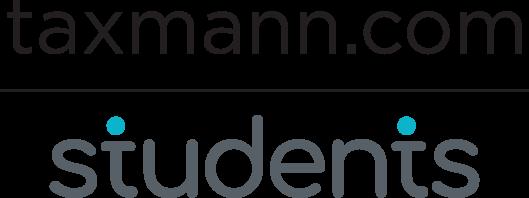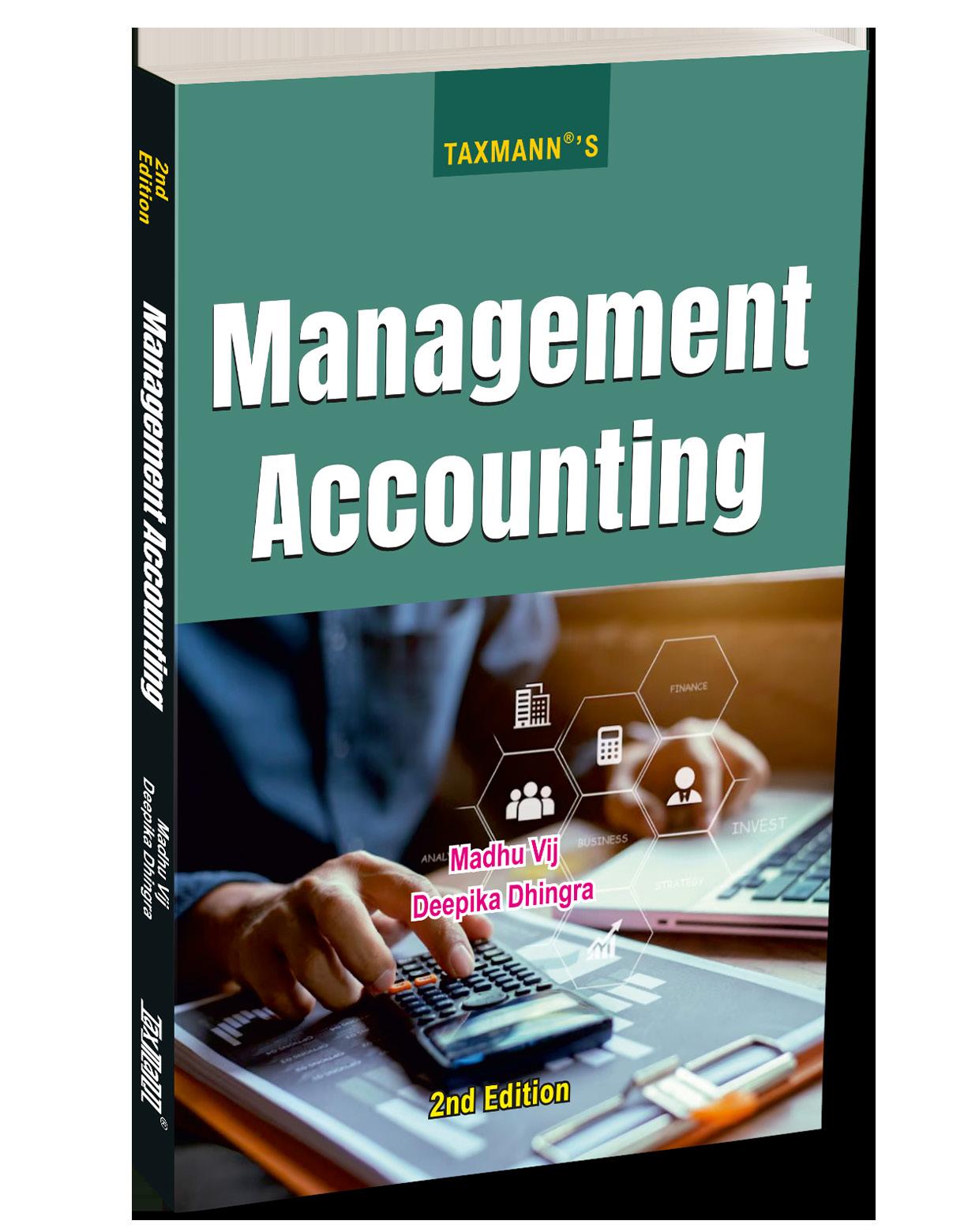

























This textbook provides a comprehensive and structured insight into Management Accounting, highlighting its crucial role in managerial decision-making. Designed to bridge the gap between theory and practice, it underscores the importance of accounting information in formulating business strategies and operational decisions. The book serves as both a foundational resource for students and a practical guide for educators and professionals seeking to understand the evolving role of accounting in contemporary business environments.
Accessible and Student-Friendly: Written in a clear and engaging style, the text demystifies complex financial and management accounting concepts. It assumes no prior background in accounting, making it highly suitable for undergraduate and postgraduate students, as well as non-accounting professionals.
Application-Oriented Learning: Each chapter includes a wide range of solved problems and practice exercises to reinforce conceptual understanding. The use of real-world examples ensures the material remains relevant to actual business scenarios.
Critical Thinking and Teamwork Development: Special end-of-chapter sections such as Classroom Activities, Critical Thinking Exercises, and Conceptual Analysis enhance analytical thinking, problem-solving abilities, and collaborative learning—key competencies for future managers.
Balanced Theoretical and Practical Approach: The book goes beyond the technicalities of accounting to emphasize its strategic applications. Students learn how accounting decisions influence business performance, resource allocation, and long-term planning.
The latest edition of the Management Accounting book has been thoughtfully revised to enhance its relevance and effectiveness in both teaching and learning. It now includes a rich collection of case studies and numerical questions designed to strengthen analytical and decision-making skills. The content has been updated to reflect the latest developments in
International Financial Reporting Standards (IFRS) and Indian Accounting Standards (Ind AS), ensuring both global and local applicability. In alignment with the National Education Policy (NEP), the book encourages experiential and skill-based learning. To support instructors and promote practical competencies among students, dedicated resource material in the form of PowerPoint presentations and Excel spreadsheets has been added. These resources not only aid teaching but also help students build proficiency in Excel—a critical tool for modern financial analysis. Additionally, the book has been meticulously mapped to the curricula of leading universities and institutions, making it a comprehensive and classroom-ready text.
This text is ideally suited as a core textbook for courses in Management Accounting, Financial Analysis, and Business Decision-Making at the undergraduate and postgraduate levels. It is particularly beneficial for:
- MBA, M.Com, E-MBA, PGDM, PGDBM, Post Graduate Diploma in Risk Management, MBE, BBA, BBS, B.Sc. in Accounting & Finance, and various other specialized programs in Management.
- Professional institutes offering accounting and finance certifications.
- Non-financial managers seeking to understand the financial dimensions of business operations.
- Faculty members and academic researchers who are looking for a comprehensive resource that supports conceptual clarity and practical relevance.
The book is divided into five major parts.
Part I introduces the fundamental concept of accounting as a system for generating information to support decision-making. The five chapters in Part I provide the necessary background that helps in acquiring a clear and firm grasp of the basic nature of accounting and the environment in which it is developed and used. The concept of the accounting equation is discussed, which describes how the financial statements of a company change because of a series of simple business transactions. Depreciation and inventory valuation methods are also discussed.
Part II offers an understanding and analysis of financial statements. The three chapters in this section concentrate on methods for analysing and interpreting the information contained in the financial statements. The funds flow statement and the form and content of the statement of cash flows, by both direct and indirect methods, are discussed. The subject of financial statement analysis is also comprehensively discussed.
Part III focuses on the appraisal and dynamics of cost behaviour and consists of seven chapters. An understanding of cost behaviour is essential for a manager to develop successful business strategies and make rational decisions. Cost-volume-profit analysis is discussed in this section,
which is a valuable tool in planning and helps in making a wide array of business decisions. The chapter on budgeting provides the foundation for the managerial functions of planning and control. Relevant costing in managerial decisions is also discussed in this section. Standard costing and variance analysis are also discussed in this part.
Part IV , comprising five chapters, integrates the management functions of control and performance evaluation. To perform these functions more effectively, managers use the techniques of responsibility accounting, standard accounting, and transfer pricing. The chapter on responsibility accounting explains how executives use cost, profit, and investment centres responsible for their decisions. The chapter on transfer pricing discusses the various methods of transfer pricing used by companies. In addition, this section also presents a discussion on Job Costing, Process Costing, Joint Product Costing, Variable Costing, and Absorption Costing.
Part V provides students with an understanding of the special areas in accounting and covers topics such as Human Resource Accounting, Inflation Accounting, and Life Cycle Costing.
• To illustrate the concepts discussed, each chapter in the book is accompanied by several solved problems that are simple to understand. Solved problems provide students with an opportunity to check the application of the concepts presented in the chapter.
• All chapters enable the students to put into practice the concepts and techniques learned and deepen their knowledge of the subject.
• At the end of each chapter, there are plenty of unsolved examples to provide the students with practice questions.
• The book explains the concept of accounting to non-financial managers simply. Developing and Broadening the Skills through Practice. A unique feature of the book is a full line of teaching and learning resources developed at the end of each chapter to help students understand the role of accounting in current business practices.
Sections such as Classroom Activities, Critical Thinking Exercise, and Conceptual Analysis are included at the end of all chapters. They help to build students’ confidence and create a dynamic and innovative learning environment. More specifically, Classroom Activities are designed to improve students’ decision-making skills and help promote teamwork among them. Critical Thinking Exercise broadens the perspective and asks students to develop several alternative essential activities of thinking. It also helps to analyse accounting information in different ways. The Conceptual Analysis involves students in the learning process and stresses the application of the concepts presented in the chapter.
Dr. Madhu Vij & Dr. Deepika Dhingra






















in India and is required in addition to thblhtdfitdltAdit


Understand the purpose, importance, and classification of cash flows.
Create Cash Flow Statements using direct and indirect methods, integrating data from balance sheets and income statements.
Interpret the Statement of Cash Flows to assess a company's financial position.
the balance sheet and profit and loss account. According to the Indian Accounting Standard 3 (AS-3), cash flow statements has been made mandatory in respect of listed companies and all other commercial, industrial and business reporting enterprises whose turnover for the accounting period exceeds ` 50 crore. International Accounting Standard-7 is the International Accounting Standard (IAS) that deals with cash-flow statements. IAS-7 requires enterprises to present a cash-flow statement as part of their financial statements. This standard prescribes the method of preparation and the information that should be provided in a cash-flow statement.
According to the Indian Accounting Standard 3 (AS-3), cash flow means inflows and outflows of cash and cash equivalents. Cash comprises cash on hand and demand deposits with banks. Cash equivalents are short term, highly liquid investments that are readily convertible into known amounts of cash and which are subject to an insignificant risk of changes in value. A cash-flow statement shows the
incoming and outgoing movement of cash during a particular period. The statement shows how changes in balance sheet and income statement affect cash and cash equivalents and breaks the analysis down according to operating, investing, and financing activities. As an analytical tool, the statement of cash flows is useful in determining survival, profitability, growth and the efficient use of corporate resources. Effective management of cash flow ensures that organisation’s always have enough cash to meet its payment obligations on schedule. In this chapter, we explain how we prepare, analyse, and interpret a statement of cash flows. The statement of cash flow provides crucial information about the firm’s cash inflows and outflows for managing and analysing the operating, investing and financing activities of the business during the period.
Cash comprises cash in hand and demand deposits with banks.
Cash equivalents are short-term, highly liquid investments that are readily convertible into known amounts of cash and which are subject to an insignificant risk of changes in value.
Cash flow are inflows and outflows of cash and cash equivalents. are the principal revenue producing activities of the enterprise and other activities that are not investing or financing activities. are the acquisition and disposal of long-term assets and other investment not included in cash equivalents.
are activities that result in changes in the size and composition of the owners’ capital (including preference share capital in the case of a company) and borrowings of the enterprise.
(1) Helps in cash management: The cash flow statement provides a clear picture of the company’s cash inflows and outflows, which helps in effective cash management of the company.
(2) Helps in decision-making: The statement of cash flows provides information that is essential for decision-making. It helps in determining the financial health of the company, identifying areas that need attention and assessing the ability of the company to repay its debts.
(3) Provides transparency: The statement of cash flows provides transparency to stakeholders, including investors, lenders, and creditors, by disclosing the company’s cash inflows and outflows. This information helps in evaluating the company’s financial performance and making informed decisions.
(4) Required for financial reporting: Cash flow statements are required by law for financial reporting purposes, so it is essential for companies to prepare and submit them.
(1) Time-consuming: Preparing a statement of cash flows can be time-consuming, especially for larger companies with complex financial transactions.
(2) It requires accurate data: The accuracy of the statement of cash flows depends to a large extent on the accuracy of the data used. If inaccurate data is used, the statement may not reflect the true financial situation of the company.
(3) Limited scope: The statement of cash flows only provides information about cash receipts and expenditures and does not provide information about other financial activities of the company such as investments and financing activities.
(4) Limited predictive power: The statement of cash flows provides information about past cash flows that may not be indicative of future cash flows. As such, it has limited predictive power for future financial performance.
Acash flow statement is a financial report that describes the source of a company’s cash and how it was spent over a specified time period. Because public limited companies tend to use accrual accounting, it is possible for a company to show profits while not having enough cash to sustain operations. For example, if a company is awarded a major contract, but has yet to realise the revenues from the contract until a later date, the company may be earning a profit in the eyes of accountants but may actually end up with less cash than when it started in the period. It may probably not have enough cash to sustain operations. A cash-flow statement neutralises the impact of the accrual entries on the other financial statements and helps investors see if a company is having trouble with cash. It also categorises the sources and uses of cash to provide the investor with an understanding of the amount of cash a company generates and uses in its operations, as opposed to the amount of cash provided by sources outside the company, such as borrowed funds or funds from stockholders.
The statement of cash flows is a guide to estimate future cash flows as it helps the business in assessing the current liquidity of a business. The statement provides information on how much money was spent for items that do not appear on the income statement, such as loan repayments, long-term asset purchases, and payment of cash dividends. Information from the cash-flow statement helps the analysts to assess the solvency of a business and its ability to generate positive cash flows in future periods.
The statement of cash flow assists creditors, shareholders, investors, managers and others in assessing such factors as:
Ability of the company to generate cash flows
Ability of the company to meet its obligations and to pay dividend
Does the company have sufficient cash to carry out its expansion plans in the near future
Need for external financing to meet the planned requirement
Cash and non-cash aspects of the company’s investment and financing decisions for the period
Reasons for differences in the beginning and ending balancing of cash at the end of the accounting period
Reasons for increase in cash when their was a net loss during the period
Cash-flow statements classify cash receipts and payments according to whether they stem from operating, investing, or financing activities. It also provides that the statement of cash flows may be prepared under either the direct or indirect method. Figure 7.1 presents the interrelationships among the balance sheet, income statement and the statement of cash flows.
The cash-flow statement classifies cash into three major categories:
Plant and Equipment, Land ` Other Assets `
Accounts Payable Debentures `
Long-Term Notes Payable `
Shareholder’s Equity ` Reserves and Surplus `
Operating Activities ` Investing Activities ` Financing Activities ` Change in Cash ` Opening Cash Balance ` Ending Cash Balance `
1. Operating Activities
2. Investing Activities
3. Financing Activities
Operating Activities
Cash flows from operating activities are primarily derived from transactions that occur daily and are essential to any business operation. They are the main revenue producing activities of the business that are not investing and financing activities. In general, if an activity appears on the company’s income statement, it is classified as a operating activity. The following needs to be however specifically considered: Some transactions, such as the sale of an item of plant, may give rise to a gain or loss which is included in the determination of net profit or loss. However, the cash flows relating to such transactions are cash flows from investing activities.
An enterprise may hold securities and loans for dealing or trading purposes, in which case they are similar to inventory acquired specifically resale. Therefore, cash flows arising from
the purchase and sale of dealing or trading securities are classified as operating activities. Similarly, cash advances and loans made by financial enterprises are usually classified as operating activities since they relate to the main revenue-producing activity of that enterprise.
Examples of cash flows from operating activities include:
Cash received from customers
Interests received on investments
Dividends received on investments
Proceeds from settlement of legal suits
Payment of salaries and wages
Payment of interest and income taxes
Cash payment to suppliers for material
Payment to the government for taxes and duties
From the following data, calculate the cash flow operating activities for 2024.
It has been assumed that the net income figure corresponds to the balance of reserves and surplus.
Investing activities include the acquisition and sale of long-term assets. These activities generally use cash because the business needs to acquire fixed assets. For example, the purchase of property, plant, equipment, and other assets is classified as an investing activity. Sometimes a company has surplus cash that it uses to lend money at an interest to another organisation. This, too, would be classified as an investing activity. Generally, any item that would be classified on the balance sheet as a long-term asset would be classified as an investing activity.
Example of cash flows relating to investing activities include:
Cash received from selling assets such as plant, equipment etc. Amount given as loans to borrowers as plant, equipment, etc.
Cash proceeds from repayment of loans Cash payments to acquire assets such as plant, equipment, etc.
Cash received from sale of investment
The money invested by the owners in the company, or money the company borrows, is classified as a financing activity. Items classified on the balance sheet as either a longterm liability or equity would be included as a financing activity. Financing activities include those transactions and activities that affect the equity capital and borrowing structure of the business. These activities represent the external sources of funds available to the business.
Example of cash inflows and cash outflows classified under the heading financing activities include the following:
Cash received from long-term and short-term Borrowing
Cash received from issuing stock
This does not include interest payments which are classified earlier as operating activities
Payment of dividends to owners borrowing
Repayment of borrowing (i.e. repayment of loans)
Exhibit I illustrates the format of the statement of cash flows.
The information to prepare the cash-flow statement usually comes from three sources. First, comparative balance sheets, second, current income statement, and third, additional information. Comparative balance sheets help in calculating changes in non-cash accounts from the beginning to the end of the period. The current income statement helps in calculating cash flows from operating activities. Additional information helps in explaining both the cash flows and non-cash investing and financing activities.
Two approaches have been permitted by the Financial Accounting Standard Board for presenting the statement of cash flows. The first approach, called the reports cash inflows and cash outflows separately. The statement of cash flows is prepared by examining the income statement and information about changes in all the balance sheet accounts except cash, during the period. The second approach, called the reconciles the reported net income and the net cash flow from operations. This method does not report the inflows and outflows separately nor describe the major outflows. It only prepares a reconciliation statement which reconciles the net income and cash flow from operations. Generally, organisations prefer the direct method for preparing a statement of cash flows. The FASB has also expressed its preference for the direct method. Organisations using the direct method must also provide a reconciliation of net income to net cash flow from operations. This is so because many external users of financial statements are interested in the reconciliation statement. However, both the direct and the indirect method result in the same net cash flow from operating activities.
Exhibit II illustrates the format of reporting the statement of cash flows under the direct method. Exhibit III shows the indirect method of reporting the cash flows.
Cash Received from Customers
Interest Received
Cash Paid for Merchandise
Cash Paid for Interest
Cash Paid for Income Taxes
Net Cash Flow from Operating Activities
Purchase of Marketable Securities
Proceeds from Sale of Marketable Securities
Cash Paid for Purchase of Plant Assets
Loan Made to Borrowers
Collection on Loans
Cash Received from Sale of Plant Assets
Proceeds from Short-term Borrowings
Proceeds from Long-term Borrowings
Cash Paid to Settle Short-term Debts
Cash Paid to Retire Long-term Debt
Cash Received from Issuing Stock
Cash Paid for Dividends
Net Cash Provided by Financing Activities
Net Increase (Decrease) in Cash
Cash and Cash Equivalent at the Beginning of the Year
Cash and Cash Equivalent at the End of the Year
The direct method provides information which may be useful in estimating future cash flow and which is not available under the indirect method and is, therefore, considered more appropriate than the indirect method. Under the direct method, information about major classes of gross cash receipts and gross cash payments may be obtained either:
(a) from the accounting records of the enterprise; or
(b) by adjusting sales, cost of sales (interest and similar income and interest expense and similar charges for a financial enterprise) and other items in the statement of profit and loss for:
(i) changes during the period in inventories and operating receivables and payables;
(ii) other non-cash items; and
(iii) other items for which the cash effects are investing or financing cash flow.
Reconciliation of Net Profit to Cash Flows from Operating Activities
Net Income
Adjustment to Reconcile Net Income to Net Cash Flows from Operating Activities
Depreciation of Fixed Assets
Amortisation Expense, Intangible Assets
Amortisation of Long-term Prepaid Expenses
Loss on Disposal of Fixed Assets, Intangible Assets (or Deduct Gains)
Increase in Accrued Expense (or Deduct Increase)
Loss on Investment (or Deduct Gains)
Decrease in Accounts Receivable (or Deduct Increase)
Decrease in Prepaid Expense (or Deduct Increase)
Decrease in Inventories (or Deduct Increase)
Increase in Accounts Payable (or Deduct Increase)
Increase in Accrued Liabilities (or Deduct Increase)
Increase in Income Taxes Payable (or Deduct Increase)
Net Cash Provided by Operating Activities
Cash Paid for Purchase of Plant (Deduct)
Cash Received from Sale of Plant (Add)
Interest Received (Add)
Purchase of Investment (Deduct)
Net Cash Provided by Investing Activities
Cash Received from Issuing Share Capital
Cash Paid to Retire Bonds (Deduct)
Cash Paid for Dividends (Deduct)
Redemption of Secured Loans/ Unsecured Loans (Deduct)
Net Cash Provided by Financing Activities
Net Increase or Decrease in Cash
Cash Balance at the Beginning of the Year
Cash Balance at the End of Year
Under the indirect method, the net cash flow from operating activities is determined by adjusting net profit or loss for the effects of:
(a) changes during the period in inventories and operating receivables and payables;
(b) non-cash items such as depreciation, provisions, deferred taxes, and unrealised foreign exchange gains and losses; and
(c) all other items for which the cash effects are investing or financing cash flows.
The cash flows associated with extraordinary items should be classified as arising from operating, investing or financing activities as appropriate and separately disclosed.
Cash flows from interest and dividends received and paid should each be disclosed separately. Cash flows arising from interest paid and interest and dividends received in the case of a financial enterprise should be classified as cash flows arising from operating activities. In the case of other enterprises, cash flows arising from interest paid should be classified as cash flows from financing activities while interest and dividends received should be classified as cash flows from investing activities. Dividends paid should be classified as cash flows from financing activities.
Cash flows arising from taxes on income should be separately disclosed and should be classified as cash flows from operating activities unless they can be specifically identified with financing and investing activities.
Significant investing and financing of a company may not involve cash. Yet these activities are disclosed at the bottom of the statement of cash flows or in a separate note or supplementary schedule to the financial statements. Examples of significant non-cash activities are:
1. Purchase of long-term assets by issuing equity share capital
2. Retirement of bonds by issuing equity share capital
3. Issue of debt to purchase fixed assets
4. Exchange of non-cash assets for other non-cash assets
5. Conversion of preferred share to equity share
The information in a statement of cash flows helps investors and creditors to protect their investment and analyse the future returns of the business. Creditors evaluate a company’s ability to generate cash before deciding whether to lend money. By examining the statement of cash flows, they can predict the amount, timing and uncertainty of future cash flows. Investors also assess cash inflows and outflows to judge the entity’s ability to pay dividends, before buying and selling shares. More specifically, the following aspects of the firm’s financial position can be assessed from the statement of cash flows:
1. The entity’s ability to generate future positive cash flows
2. The entity’s ability to meet obligations and ensure that they are giving adequate returns to investors, for example by paying dividends, servicing debt
3. The reasons for variations between reported profit after tax and net cash provided by operating activities
4. The cash and non-cash activities of investing and financing activities of the business during the period
Examination of the latest audited accounts of listed companies shows that the listed companies adopt the indirect method of preparation and presentation of cash-flow statements. The major differences between the direct and indirect methods are:
1. Under the direct method, items affecting or having nexus directly with cash flows of the reported entity are included. Under the indirect method, net profit arrived at on accrual basis is taken as the starting point. Non-cash items are added or subtracted as the case may be, to arrive at net cash provided by operating activities.
2. The components of items that form a part of the direct and indirect method are different.
3. The user’s perspective is taken into account under the direct method as it directly portrays the inflow/outflow of cash. Indirect method, on the other hand, is more commonly used but very difficult to comprehend. The method employs a scheme of adjustment for mainly non-cash items.
The important question here is, ‘Do users of cash-flow statement get full benefit and information from the cash-flow statement’? The answer is NO mainly because of the accrual system of accounting on the basis of which the cash-flow statement is derived. The major reasons are:
1. When preparing a statement of cash flows, impacts due to changes in the accounting policies, mainly affecting material transactions, do not adequately get reflected in the cash-flow statement.
AUTHOR : MADHU VIJ, DEEPIKA DHINGRA
PUBLISHER : TAXMANN
DATE OF PUBLICATION : JUNE 2025
EDITION : 2ND EDITION
ISBN NO : 9789357787550
NO. OF PAGES : 716
BINDING TYPE : PAPERBACK

Management Accounting concisely bridges theoretical accounting principles with practical financial decisionmaking. Reflecting the latest IFRS and Ind AS updates, it also aligns with India’s National Education Policy (NEP) through experiential, skill-based learning. The book synthesises academic expertise and hands-on insights to guide readers through the evolving realm of management accounting.
This book is intended for the following audience:
• Undergraduate & Postgraduate Students – MBA, M.Com, PGDM, BBA, B.Com
• Professional Certification Candidates – Accounting & Finance Courses
• Non-financial Managers – Develop Financial Decision-making Skills
• Faculty Members – Ready-to-use Teaching Aids, PowerPoint Presentations, Excel Resources
The Present Publication is the 2nd Edition, authored by Dr Madhu Vij & Dr Deepika Dhingra. The noteworthy features of this book are as follows:
• [Updated & Aligned Content] Incorporates the latest IFRS & Ind AS requirements
• [Case-based & Numerical Learning] Offers rich case studies and diverse problem sets
• [Skill Development Focus] End-of-chapter activities (e.g., ‘Let’s Get Together and Solve,’ ‘Critical Thinking Exercises’)
• [Tech-Integrated Learning] Includes Excel-based exercises and teaching slides
• [NEP Alignment] Emphasises practical, skills-based education
• [User-friendly Design] Clear, accessible style for both accounting and non-accounting learners
• [Practice-driven Pedagogy] Extensive solved and unsolved problems
• [Balanced Theory & Practice] Highlights strategic implications of accounting decisions
• [Excel Proficiency] Builds spreadsheet skills critical for modern financial analysis